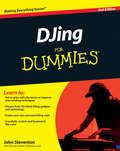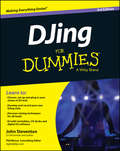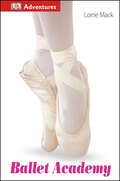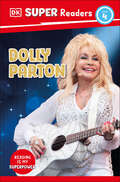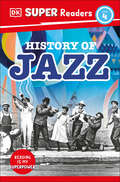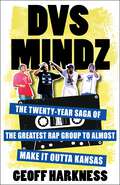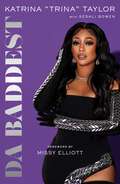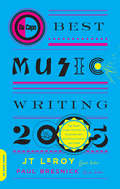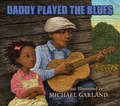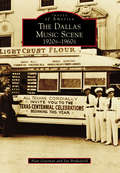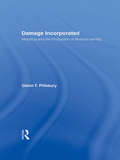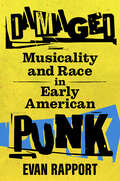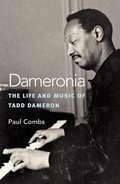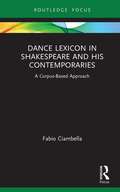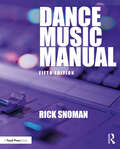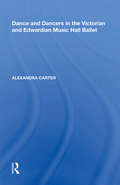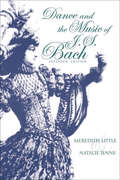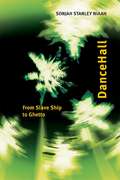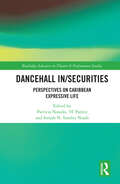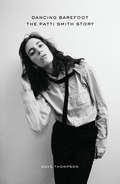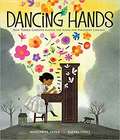- Table View
- List View
DJing For Dummies
by John SteventonHow to start and build a successful career as a DJ-from at-home mixing to making demos to playing to a live crowdWhether it's a digital or vinyl track of "Proud Mary," a DJ sets the mood, amps up the excitement, and gets a crowd of revelers rockin'. Often an outsized personality, blessed with a gorgeous voice and an encyclopedic knowledge of music, a DJ is this era's new pop star. For those interested in how to begin a career as a DJ, DJing For Dummies offers newcomers all the technical know-how needed as well as advice on how to create your own DJing style and how to make DJing work for you. With tips on equipment essentials, such as turntables, slipmats and needles, headphones, and amplifiers, as well as buying records, CDs, and MP3s, this practical guide takes you through the basics of mixing, song structure, building a foolproof set, creating a great demo, and what to do when you finally face a live audience.Includes ten resources for expanding your skills and fan baseWith invaluable advice on ten DJing mistakes to avoid as well as answers to DJ questions you're too afraid to askIncludes updated info on the latest software and techniques, expanded content on digital DJing, and DJing over the InternetWith tips on the ten items to take with you when you get a gig, as well as how to DJ at a wedding, DJing For Dummies will help turn your fantasy into an exciting and fun, money-making career.
DJing For Dummies (For Dummies Ser.)
by John SteventonDJ like a pro—without skipping a beat The bestselling guide to spinning and scratching is back! If you've ever spent hours in your bedroom with two turntables and an earful of tracks that sound off-beat or out of key, DJing For Dummies is the go-to guide for taking your skills to the next level. Inside, John Steventon, a successful club DJ, walks you through the basics of mixing, the techniques and tricks you need to create your own DJ style and how to make DJing work for you. Covering both digital and old-school vinyl-based instruction, this guide covers all the latest DJ technology, equipment and software so you can get mixing and stay one step ahead of the crowd. Brimming with expert advice and easy-to-follow explanations, the information in DJing For Dummies gives you everything you need to build a foolproof set and play to a live crowd. Nail down the basics and build on existing skills Sort through the latest equipment and technology Have a go at crossfading, beatmatching and scratching Mix tracks seamlessly to sound like a pro If you're new to the game or looking to step up your skills and graduate to club work, DJing For Dummies has you covered.
DK Adventures: Ballet Academy (DK Adventures)
by Lorrie MackLucy follows her dream to train to be a professional ballerina, and is selected as one of a handful of students into the Ballet Academy. Follow her journey as she gets through the tough training with the support of teachers and fellow students, and performs alongside her idol in The Nutcracker before facing her final challenge of getting into Ballet High School. DK Adventures are an innovative mix of narrative and nonfiction for kids ages 8-11 featuring engaging, action-packed stories that help kids build their skills in vocabulary, grammar, comprehension, and critical thinking while developing a love of reading. With diaries, recipes, poetry, instructions, graphics, or songs, the genre spreads in each DK Adventures title enhance the story and reinforce curriculum learning, while the expansive range of entertaining nonfiction subjects will appeal to boys and girls everywhere. Supports the Common Core State Standards.
DK Super Readers Level 4 Dolly Parton (DK Super Readers)
by DKHelp your child power up their reading skills and learn all about the life of the celebrated singer, actor and philanthropist with this fun-filled nonfiction reader carefully leveled to help children progress.DK Super Readers Level 3: Dolly Parton offers a sensitive account of the life and work of the legendary country singer-songwriter and anti-poverty campaigner. It is a motivating introduction to using essential nonfiction reading skills, proving ideal for children ready to enter the riveting world of reading. DK Super Readers take children on a journey through the wonderful world of nonfiction: traveling back to the time of dinosaurs, learning more about animals, exploring natural wonders, and more, all while developing vital nonfiction reading skills and progressing from first words to reading confidently. The DK Super Readers series can help your child practice reading by:Covering engaging, motivating, curriculum-aligned topics.Building knowledge while progressing Grades 3 and 4 reading skills.Developing subject vocabulary on topics such as the iconic musician and campaigner’s life and achievements.Boosting understanding and retention through comprehension quizzes.Each title, which has been leveled using MetaMetrics®: The Lexile Framework for Reading, integrates science, geography, history, and nature topics so there’s something for all children’s interests. The books and online content perfectly supplement core literacy programs and are mapped to the Common Core Standards. Children will love powering up their nonfiction reading skills and becoming reading heroes. DK Super Readers Level 3 titles are visually engaging, full of fun facts about exciting topics, and motivate children to improve their nonfiction reading skills. They are perfect for children ages 8 to 10 (Grades 3 and 4) who are newly independent readers ready to advance.
DK Super Readers Level 4 History of Jazz (DK Super Readers)
by DKHelp your child power up their reading skills and learn all about the sizzling jazz greats of the twentieth century in this fun-filled nonfiction reader—carefully leveled to help children progress.It was new, it was exciting, it was the Jazz Age! Learn all about the history of this unique music.The engaging text has been carefully leveled using Lexile so that children are set up to succeed.A motivating introduction to using essential nonfiction reading skills.Children will love to find out about the famous jazz musicians and singers making their mark!
DVS Mindz: The Twenty-Year Saga of the Greatest Rap Group to Almost Make It Outta Kansas
by Geoff Harkness99.9% of aspiring rappers never make it in the music industry. So why do we only hear the stories of the ones who do?DVS Mindz might be the greatest rap group you’ve never heard of. Formed in Topeka, Kansas, in the mid-1990s, they developed a reputation for ferocious rhyming and frenetic live performances. In their heyday, DVS Mindz released a critically acclaimed CD, received nominations for prestigious awards, and opened for legends such as Wu-Tang Clan, Run-DMC, and De La Soul as well as KC icon Tech N9ne. But the group struggled with creative differences, substance abuse, ego battles, and money issues, and they split up in 2003.Geoff Harkness takes readers on a unique two-decade journey alongside the members of DVS Mindz, chronicling their childhoods, their brush with success, and what became of them in the years that followed. Based on more than one hundred hours of video and audio recordings from 1999 to 2022, this fly-on-the-wall account offers a backstage pass into the recording studios and radio stations, video shoots and house parties, nightclubs and concert halls of the Kansas City-Lawrence-Topeka music scene circa 2000.DVS Mindz is at once a compulsively readable group biography of four talented MCs, a vibrant voyage through the forgotten history of local hip hop, and a breathtakingly real story of struggling to achieve big dreams.
Da Baddest
by TrinaThe award-winning, platinum selling rapper, songwriter, and television personality shares her unforgettable story of coming of age in Miami, her inevitable rise to stardom, and her enduring legacy as a Hip-Hop Icon.Growing up in the Liberty City area of Miami, Florida, Katrina &“Trina&” Taylor spent her childhood feeling relatively sheltered by her mother and stepfather. Trina and her mother had an unbreakable bond and Liberty City felt like a playground made just for her. And even at a young age, Trina knew what she wanted: to be a powerful, successful, and magnetic woman, a woman who was entirely self-reliant and independent. She dreamed of becoming a dancer, sexy and sparkling in the background of rap music videos she saw being filmed around Liberty City. Little did she know, she&’d eventually be the star of the videos, and a founding Queen of rap. In Da Baddest, Trina&’s voice is, as always, powerful, insightful, witty, and provocative, while also showcasing her vulnerability and deep love for her family, home, and music. This evocative look into Trina&’s upbringing and life as a rap icon proves why she is the blueprint, how she helped pave the way for the future of female rappers and hip-hop artists, and why no one but her can hold the title of &“The Baddest B*tch.&”
Da Capo Best Music Writing 2005: The Year's Finest Writing on Rock, Hip-Hop, Jazz, Pop, Country, & More
by Jt LeroyDa Capo Best Music Writing has become one of the most eagerly awaited annuals of them all. Celebrating the year in music writing by gathering a rich array of essays, missives, and musings on every style of music from rock to hip-hop to R&B to jazz to pop to blues and more, it is essential reading for anyone who loves great music and accomplished writing. Scribes of every imaginable sort-novelists, poets, journalists, musicians-are gathered to create a multi-voiced snapshot of the year in music writing that, like the music it illuminates, is every bit as thrilling as it is riveting.Past writers have included:Elizabeth MEndez Berry * Ta-Nehisi Coates * Michael Corcoran * Robbie Fulks * Michaelangelo Matos * Alex Ross * Roni Sarig * Joel Selvin * Tour8E * Lynn Hirschberg * Chuck Klosterman * Elizabeth Gilbert * Jay McInerney * Elvis Costello * Susan Orlean * Jonathan Lethem * David Rakoff * Mike Doughty * Lorraine Ali * Greil Marcus * Richard Meltzer * Robert Gordon * Sarah Vowell * Nick Tosches * Anthony DeCurtis * William Gay * Whitney Balliett * Lester Bangs * Rosanne Cash * Eddie Dean * Selwyn Seyfu Hinds * Kate Sullivan * Alec Wilkinson * David Hadju * Lenny Kaye * The Onion * Mark Jacobson * Gary Giddins * John Leland * Luc Sante * Monica Kendrick * Kalefa Sanneh
Da Capo Best Music Writing 2006: The Year's Finest Writing on Rock, Hip-Hop, Jazz, Pop, Country, and More
by Mary Gaitskill Daphne CarrWhether you count yourself a member of the hip-hop nation, bang your head yearly at Ozzfest, wear a cowboy hat, or dance to the top twenty, you're sure to find something to love inDa Capo Best Music Writing 2006. Gathering a rich array of writing by music journalists, novelists, and scribes from a wide range of sources-highbrow literary quarterlies to 'zines and blogs--Da Capo Best Music Writingis a multi-voiced snapshot of the year in music writing that, like the music it illuminates, is every bit as thrilling as it is revealing.
Daddy Played the Blues
by Michael Garland*Notable Social Studies Trade Books Selection for Young People 2018* “I was six years old the day we left the farm in Mississippi,” remembers Cassie in this richly textured picture book. “Between the boll weevils, the floods, and the landlord, there was no way a family could scratch out a living there anymore.” Packing themselves into an old jalopy—with Daddy, Uncle Vern, and Mama in the front seat and Cassie and her two brothers in the back—they joined the Great Migration from the impoverished Deep South to Chicago, where there was work to be had in the stockyards. Across the kids’ laps lay Daddy’s prized possession, a six-string guitar. Daddy worked hard to put food on the table, but what he really loved was playing the blues. This evocative tale of the African-American odyssey in search of a better life is also a homage to the uniquely American music that developed from African music and American spirituals, work songs, and folk ballads. In the book’s backmatter, Garland relates how he first heard and fell in love with blues music, beginning a lifelong fandom. Portraits and thumbnail biographies of great blues musicians and landmark songs complete this tribute to the great American music and the yearnings that produced it. Fountas & Pinnell Level S
Dallas Music Scene: 1920s-1960s, The
by Alan Govenar Jay BrakefieldFor much of the 20th century, Dallas was home to a wide range of vital popular music. By the 1920s, the streets, dance halls, and vaudeville houses of Deep Ellum rang with blues and jazz. Blind Lemon Jefferson was discovered singing the blues on the streets of Deep Ellum but never recorded in Dallas. Beginning in the 1930s, however, artists from Western swing pioneer Bob Wills to blues legend Robert Johnson recorded in a three-story zigzag moderne building at 508 Park Avenue. And from the late 1940s to the mid-1960s, a wrestling arena called the Sportatorium was home to a Saturday night country and rock-and-roll extravaganza called the Big "D" Jamboree.
Damage Incorporated: Metallica and the Production of Musical Identity
by Glenn Pillsbury"Damage Incorporated" is the first book about the legendary heavy metal band Metallica that provides a detailed exploration of the group’s music and its place within the wider popular music landscape. Written with a broad readership in mind, it offers an interdisciplinary study that incorporates a range of topics which intersect with the band’s music and cultural influence. For students of popular culture, mass media, and music, "Damage Incorporated" will be necessary reading, and sets a new standard for the study and exploration of metal within the field of popular music studies.
Damaged: Musicality and Race in Early American Punk (American Made Music Series)
by Evan RapportDamaged: Musicality and Race in Early American Punk is the first book-length portrait of punk as a musical style with an emphasis on how punk developed in relation to changing ideas of race in American society from the late 1960s to the early 1980s. Drawing on musical analysis, archival research, and new interviews, Damaged provides fresh interpretations of race and American society during this period and illuminates the contemporary importance of that era.Evan Rapport outlines the ways in which punk developed out of dramatic changes to America’s cities and suburbs in the postwar era, especially with respect to race. The musical styles that led to punk included transformations to blues resources, experimental visions of the American musical past, and bold reworkings of the rock-and-roll and rhythm-and-blues sounds of the late 1950s and early 1960s, revealing a historically oriented approach to rock that is strikingly different from the common myths and conceptions about punk. Following these approaches, punk itself reflected new versions of older exchanges between the US and the UK, the changing environments of American suburbs and cities, and a shift from the expressions of older baby boomers to that of younger musicians belonging to Generation X. Throughout the book, Rapport also explores the discourses and contradictory narratives of punk history, which are often in direct conflict with the world that is captured in historical documents and revealed through musical analysis.
Dameronia: The Life and Music of Tadd Dameron
by Paul CombsDameronia is the first authoritative biography of Tadd Dameron, an important and widely influential figure in jazz history as one of the most significant composers and arrangers of jazz, swing, bebop, and big band. He arranged for names like Count Basie, Artie Shaw, Jimmie Lunceford, and Dizzy Gillespie and played with Bull Moose Jackson and Benny Golson. This book sets out to clarify Dameron's place in the development of jazz in the post–World War II era. It also attempts to shed light on the tragedy of his retreat from the center of jazz activity in the 1950s. By tracing Dameron's career, one finds that until 1958, when he was incarcerated for drug related offenses, he was at the forefront of developments in jazz, sometimes anticipating trends that would not develop fully for several years. Dameron was also an important influence on several high-profile musicians, including Miles Davis, Benny Golson, and Frank Foster. Dameron was a very private man, and while in some aspects of his life he will probably remain an enigma, this book manages to give an intimate portrait of his life at a couple of key stages: the height of his career in 1949 and the brief but productive period between his release from prison and his death.
Damnable Practises: Witches, Dangerous Women, And Music In Seventeenth-century English Broadside Ballads
by Sarah F. WilliamsBroadside ballads-folio-sized publications containing verse, a tune indication, and woodcut imagery-related cautionary tales, current events, and simplified myth and history to a wide range of social classes across seventeenth century England. Ballads straddled, and destabilized, the categories of public and private performance spaces, the material and the ephemeral, music and text, and oral and written traditions. Sung by balladmongers in the streets and referenced in theatrical works, they were also pasted to the walls of local taverns and domestic spaces. They titillated and entertained, but also educated audiences on morality and gender hierarchies. Although contemporaneous writers published volumes on the early modern controversy over women and the English witch craze, broadside ballads were perhaps more instrumental in disseminating information about dangerous women and their acoustic qualities. Recent scholarship has explored the representations of witchcraft and malfeasance in English street literature; until now, however, the role of music and embodied performance in communicating female transgression has yet to be investigated. Sarah Williams carefully considers the broadside ballad as a dynamic performative work situated in a unique cultural context. Employing techniques drawn from musical analysis, gender studies, performance studies, and the histories of print and theater, she contends that broadside ballads and their music made connections between various degrees of female crime, the supernatural, and cautionary tales for and about women.
Dance Lexicon in Shakespeare and His Contemporaries: A Corpus Based Approach (Studies in Performance and Early Modern Drama)
by Fabio CiambellaThis book provides a thorough analysis of terpsichorean lexis in Renaissance drama. Besides considering not only the Shakespearean canon but also the Bard’s contemporaries (e.g., dramatists as John Marston and Ben Jonson among the most refined Renaissance dance aficionados), the originality of this volume is highlighted in both its methodology and structure. As far as methods of analysis are concerned, corpora such as the VEP Early Modern Drama collection and EEBO, and corpus analysis tools such as #LancsBox are used in order to offer the widest range of examples possible from early modern plays and provide co-textual references for each dance. Examples from Renaissance playwrights are fundamental for the analysis of connotative meanings of the dances listed and their performative, poetic and metaphoric role in sixteenth- and seventeenth-century drama. This study will be of great interest to Renaissance researchers, lexicographers and dance historians.
Dance Music Manual
by Rick SnomanDance Music Manual – a comprehensive guidebook for novice and seasoned professionals alike – walks readers through the tools and techniques required to create original, captivating and professional-sounding electronic dance music.Key features of the Dance Music Manual include the following: Learn to navigate the complex world of electronic music production. Unleash your creativity with practical advice, insider tips and expert techniques. Explore the intricacies of crafting infectious grooves and sculpting sounds. From beginner to expert, this comprehensive guide illuminates every aspect of producing, mixing and mastering dance music. Used by professionals worldwide, this updated fifth edition has been significantly rewritten and includes new content on building your studio, processing, sampling, sound design and a chapter on DJ techniques. A companion website supports the book by providing audio and video examples of the techniques.
Dance and Dancers in the Victorian and Edwardian Music Hall Ballet (Music In Nineteeth-century Britain Ser.)
by Alexandra CarterThe Victorian and Edwardian music hall ballet has been a neglected facet of dance historiography, falling prey principally to the misguided assumption that any ballet not performed at the Opera House or 'legitimate' theatre necessarily meant it was of low cultural and artistic merit. Here Alexandra Carter identifies the traditional marginalization of the working class female participants in ballet historiography, and moves on to reinstate the 'lost' period of the music hall ballet and to apply a critical account of that period. Carter examines the working conditions of the dancers, the identities and professional lives of the ballet girls and the ways in which the ballet of the music hall embodied the sexual psyche of the period, particularly in its representations of the ballet girl and the ballerina. By drawing on newspapers, journals, theatre programmes, contemporary fiction, poetry and autobiography, Carter firmly locates the period in its social, economic and artistic context. The book culminates in the argument that there are direct links between the music hall ballet and what has been termed the 'birth' of British ballet in the 1930s; a link so long ignored by dance historians. This work will appeal not only to those interested in nineteenth century studies, but also to those working in the fields of dance studies, gender studies, cultural studies and the performing arts.
Dance and the Music of J. S. Bach, Expanded Edition
by Meredith Little Natalie JenneStylized dance music and music based on dance rhythms pervade Bach's compositions. Although the music of this very special genre has long been a part of every serious musician's repertoire, little has been written about it.The original edition of this addressed works that bore the names of dances--a considerable corpus. In this expanded version of their practical and insightful study, Meredith Little and Natalie Jenne apply the same principals to the study of a great number of Bach's works that use identifiable dance rhythms but do not bear dance-specific titles.Part I describes French dance practices in the cities and courts most familiar to Bach. The terminology and analytical tools necessary for discussing dance music of Bach's time are laid out. Part II presents the dance forms that Bach used, annotating all of his named dances. Little and Jenne draw on choreographies, harmony, theorists' writings, and the music of many seventeenth- and eighteenth-centurycomposers in order to arrive at a model for each dance type.In Appendix A all of Bach's named dances are listed in convenient tabular form; included are the BWV number for each piece, the date of composition, the larger work in which it appears, the instrumentation, and the meter.Appendix B supplies the same data for pieces recognizable as dance types but not named as such.More than ever, this book will stimulate both the musical scholar and the performer with a new perspective at the rhythmic workings of Bach's remarkable repertoire of dance-based music.
Dance of Death: The Life of John Fahey, American Guitarist
by David Fricke Steve LowenthalJohn Fahey is to the solo acoustic guitar what Jimi Hendrix was to the electric: the man whom all subsequent musicians had to listen to. Fahey made more than 40 albums between 1959 and his death in 2001, most of them featuring only his solo steel-string guitar. He fused elements of folk, blues, and experimental composition, taking familiar American sounds and recontextualizing them as something entirely new. Yet despite his stature as a groundbreaking visionary, Fahey's intentions--as a man and as an artist--remain largely unexamined. Journalist Steve Lowenthal has spent years researching Fahey's life and music, talking with his producers, his friends, his peers, his wives, his business partners, and many others. He describes Fahey's battles with stage fright, alcohol, and prescription pills; how he ended up homeless and mentally unbalanced; and how, despite his troubles, he managed to found a record label that won Grammys and remains critically revered. This portrait of a troubled and troubling man in a constant state of creative flux is not only a biography but also the compelling story of a great American outcast.
DanceHall: From Slave Ship to Ghetto (African and Diasporic Cultural Studies)
by Sonjah Stanley NiaahDanceHall combines cultural geography, performance studies and cultural studies to examine performance culture across the Black Atlantic. Taking Jamaican dancehall music as its prime example, DanceHall reveals a complex web of cultural practices, politics, rituals, philosophies, and survival strategies that link Caribbean, African and African diasporic performance.Combining the rhythms of reggae, digital sounds and rapid-fire DJ lyrics, dancehall music was popularized in Jamaica during the later part of the last century by artists such as Shabba Ranks, Shaggy, Beenie Man and Buju Banton. Even as its popularity grows around the world, a detailed understanding of dancehall performance space, lifestyle and meanings is missing. Author Sonjah Stanley Niaah relates how dancehall emerged from the marginalized youth culture of Kingston’s ghettos and how it remains inextricably linked to the ghetto, giving its performance culture and spaces a distinct identity. She reveals how dancehall’s migratory networks, embodied practice, institutional frameworks, and ritual practices link it to other musical styles, such as American blues, South African kwaito, and Latin American reggaetòn. She shows that dancehall is part of a legacy that reaches from the dance shrubs of West Indian plantations and the early negro churches, to the taxi-dance halls of Chicago and the ballrooms of Manhattan. Indeed, DanceHall stretches across the whole of the Black Atlantic’s geography and history to produce its detailed portrait of dancehall in its local, regional, and transnational performance spaces.
Dancehall In/Securities: Perspectives on Caribbean Expressive Life (Routledge Advances in Theatre & Performance Studies)
by Patricia Noxolo ‘h’ Patten Sonjah N. Stanley NiaahThis book focuses on how in/security works in and through Jamaican dancehall, and on the insights that Jamaican dancehall offers for the global study of in/security. This collection draws together a multi-disciplinary range of key scholars in in/security and dancehall. Scholars from the University of the West Indies' Institute of Caribbean Studies and Reggae Studies Unit, as well as independent dancehall and dance practitioners from Kingston, and writers from the UK, US and continental Europe offer their differently situated perspectives on dancehall, its histories, spatial patterning, professional status and aesthetics. The study brings together critical security studies with dancehall studies and will be of great interest to students, scholars and practitioners in theatre, dance and performance studies, sociology, cultural geography, anthropology, postcolonial studies, diaspora studies, musicology and gender studies.
Dancing Across Borders: Perspectives on Dance, Young People and Change
Dancing Across Borders presents formal and non-formal settings of dance education where initiatives in different countries transcend borders: cultural and national borders, subject borders, professional borders and socio-economic borders. It includes chapters featuring different theoretical perspectives on dance and cultural diversity, alongside case narratives that show these perspectives in a specific cultural setting. In this way, each section charts the processes, change and transformation in the lives of young people through dance. Key themes include how student learning is enhanced by cultural diversity, experiential teaching and learning involving social, cross-cultural and personal dimensions. This conceptually aligns with the current UNESCO protocols that accent empathy, creativity, cooperation, collaboration alongside skills- and knowledge-based learning in an endeavour to create civic mindedness and a more harmonious world. This volume is an invaluable resource for teachers, policy makers, artists and scholars interested in pedagogy, choreography, community dance practice, social and cultural studies, aesthetics and interdisciplinary arts. By understanding the impact of these cross-border collaborative initiatives, readers can better understand, promote and create new ways of thinking and working in the field of dance education for the benefit of new generations.
Dancing Barefoot: The Patti Smith Story
by Dave ThompsonOffering a unique analysis and discussion of her life, career, and work, this is the true story of Patti Smith. Widely acknowledged as one of the most significant American artists of the rock age, an acclaimed poet, and a figurehead for many liberal political causes, Patti Smith went from an ugly-duckling childhood in postwar New Jersey to become queen of the 1970s New York art scene. Not a tell-all biography, this measured, accurate, and enthusiastic account of Smith's career is written for her loyal fans as well as for neophytes hungry for a great rock 'n' roll story. Guided by interviews with those who have known her--including Ivan Kral, Tom Verlaine, Richard Lloyd, John Cale, and Jim Carroll--it relies most of all on Patti's own words.
Dancing Hands: How Teresa Carreño Played The Piano For President Lincoln
by Margarita Engle Rafael LópezAs a little girl, Teresa Carreño loved to let her hands dance across the beautiful keys of the piano. If she felt sad, music cheered her up, and when she was happy, the piano helped her share that joy. Soon she was writing her own songs and performing in grand cathedrals. Then a revolution in Venezuela forced her family to flee to the United States. Teresa felt lonely in this unfamiliar place, where few of the people she met spoke Spanish. Worst of all, there was fighting in her new home, too—the Civil War. Still, Teresa kept playing, and soon she grew famous as the talented Piano Girl who could play anything from a folk song to a sonata. So famous, in fact, that President Abraham Lincoln wanted her to play at the White House! Yet with the country torn apart by war, could Teresa’s music bring comfort to those who needed it most?
